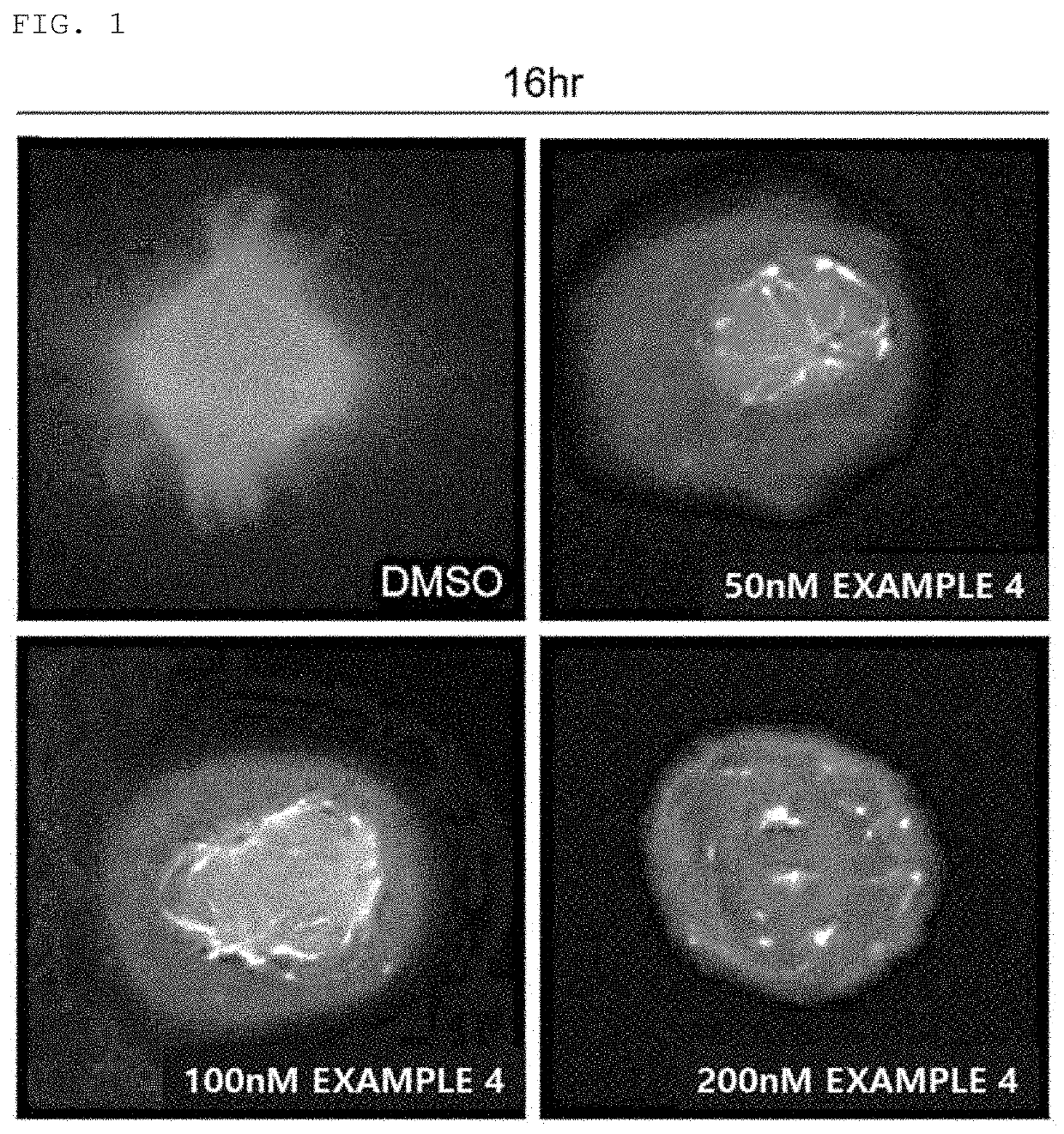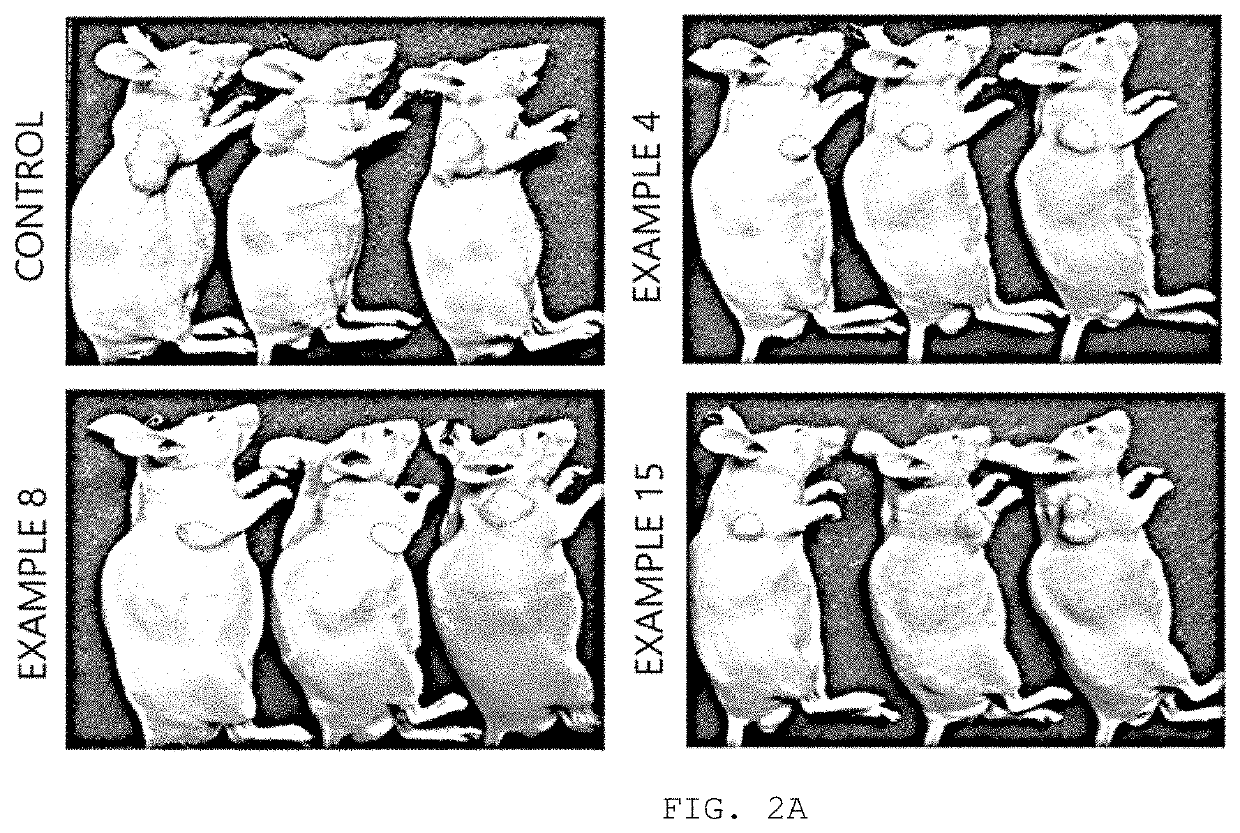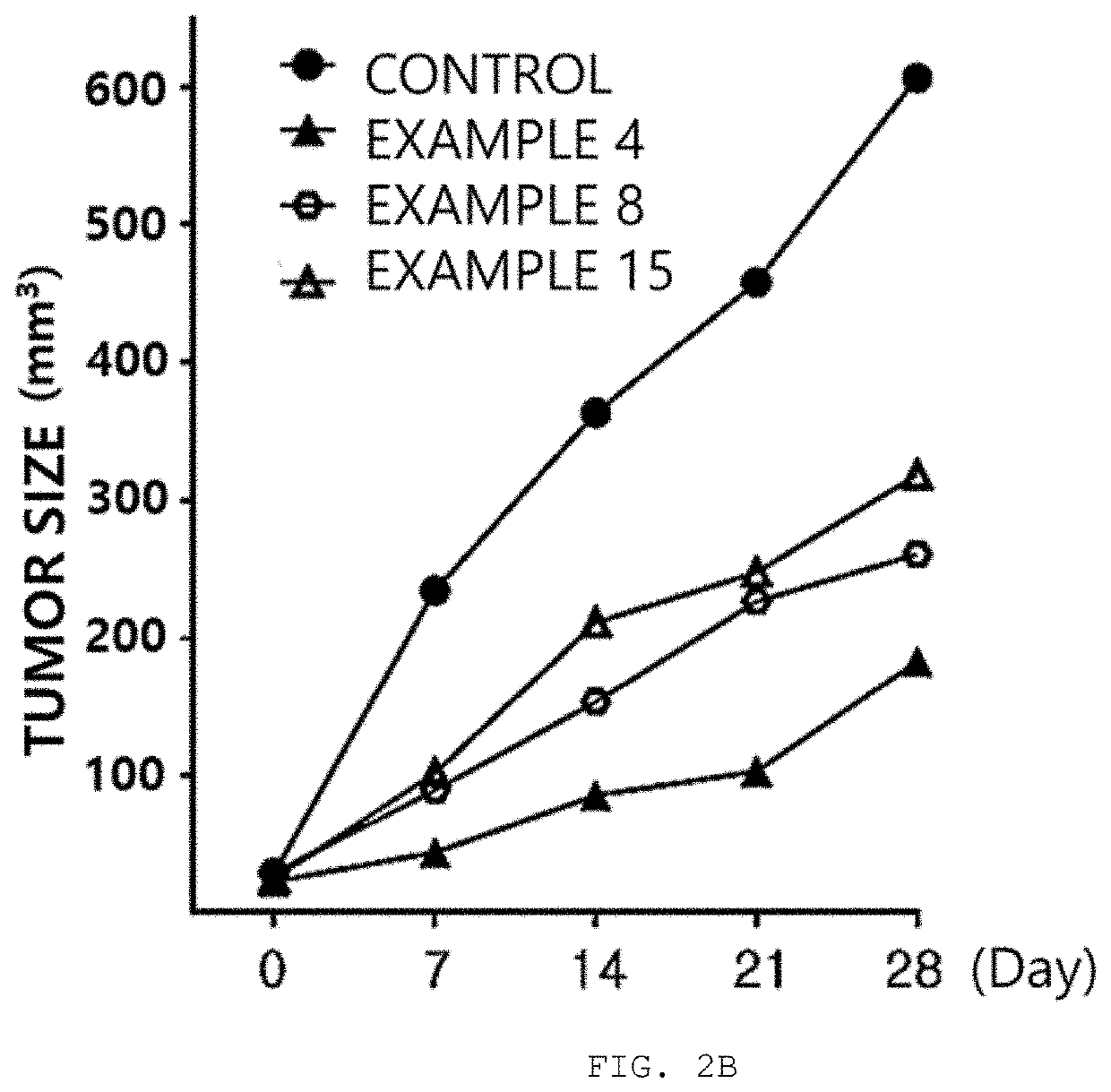Benzofuran-based n-acylhydrazone derivative and pharmaceutical composition comprising same
- Summary
- Abstract
- Description
- Claims
- Application Information
AI Technical Summary
Benefits of technology
Problems solved by technology
Method used
Image
Examples
Example
Preparation Example 1: Ethyl 5-methylbenzofuran-2-carboxylate
[0108]
[0109]5-Methylsalicylaldehyde (1.40 g, 10.3 mmol) was dissolved in DMF (30 mL), then Ce2SO4 (10.07 g, 30.9 mmol) and ethyl bromoacetate (1.38 mL, 12.4 mmol) were added thereto, and reacted at 70° C. for 15 hours. The reaction solution was diluted with water and extracted with EA. The organic layer was dried over MgSO4, filtered, and distilled under reduced pressure. The residue was separated by column chromatography (n-Hex:EA=10:1) to obtain 1.28 g of the title compound (yield 61%, colorless liquid).
[0110]1H NMR (400 MHz, CDCl3): δ 7.49-7.46 (m, 3H), 7.26 (m, 1H), 4.45 (q, J=7.2 Hz, 2H), 2.46 (s, 3H), 1.44 (t, J=7.2 Hz, 3H); 13C NMR (100 MHz, CDCl3): δ 159.85, 154.37, 145.92, 133.51, 129.27, 127.22, 122.45, 113.74, 112.02, 61.61, 21.45, 14.51; mp 38-39° C.
Example
Preparation Example 2: 5-Methylbenzofuran-2-carbohydrazide
[0111]
[0112]Ethyl 5-methylbenzofuran-2-carboxylate (2.04 g, 10.0 mmol) obtained in Preparation Example 1 was dissolved in EtOH (30 mL), then hydrazine monohydrate (1.50 g, 30.0 mmol) was added thereto, and refluxed for 24 hours. The reaction solution was distilled under reduced pressure to obtain a solid, and the obtained solid was washed with water and dried to obtain 1.72 g of the title compound (yield 90%, white solid).
[0113]1H NMR (400 MHz, DMSO-d6): δ 9.97 (s, 1H), 7.52-7.49 (m, 2H), 7.43 (s, 1H), 7.25 (dd, J=8.4, 1.6 Hz, 1H), 4.55 (br s, 2H), 2.40 (s, 3H); 13C NMR (100 MHz, DMSO-d6): δ 157.92, 152.64, 148.48, 132.68, 127.84, 127.11, 122.04, 111.27, 108.47, 20.81; MS (MALDI-TOF) m / z 213 [M+Na]+; mp 159° C.
Example
Preparation Example 3: Ethyl 5-methoxybenzofuran-2-carboxylate
[0114]
[0115]2-Hydroxy-5-methoxybenzaldehyde (1.25 mL, 10.0 mmol) was dissolved in DMF (30 mL), then K2CO3 (6.91 g, 50.0 mmol) and ethyl bromoacetate (1.33 mL, 12.0 mmol) were added thereto, and reacted at 70° C. for 15 hours. The reaction solution was diluted with water and extracted with EA. The organic layer was dried over MgSO4, filtered, and distilled under reduced pressure. The residue was separated by column chromatography (n-Hex:EA=3:1) to obtain 1.1 g of the title compound (yield 50%, white solid).
[0116]1H NMR (400 MHz, CDCl3): δ 7.50-7.47 (m, 2H), 7.08-7.05 (m, 2H), 4.45 (q, 2H, J=7.2 Hz), 3.86 (s, 3H), 1.44 (t, 3H, J=7.2 Hz); mp 53° C.
PUM
| Property | Measurement | Unit |
|---|---|---|
| Time | aaaaa | aaaaa |
| Composition | aaaaa | aaaaa |
| Solubility (mass) | aaaaa | aaaaa |
Abstract
Description
Claims
Application Information
 Login to View More
Login to View More - R&D
- Intellectual Property
- Life Sciences
- Materials
- Tech Scout
- Unparalleled Data Quality
- Higher Quality Content
- 60% Fewer Hallucinations
Browse by: Latest US Patents, China's latest patents, Technical Efficacy Thesaurus, Application Domain, Technology Topic, Popular Technical Reports.
© 2025 PatSnap. All rights reserved.Legal|Privacy policy|Modern Slavery Act Transparency Statement|Sitemap|About US| Contact US: help@patsnap.com



